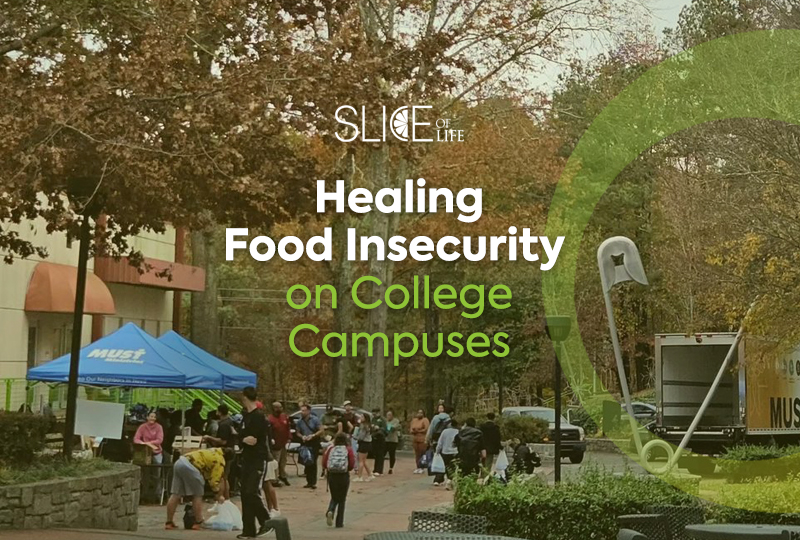It seems strange to bring up food insecurity right before Thanksgiving, but the stark contrast between the haves and have nots makes this issue much more apparent. Food insecurity among college students is a major problem that often hides in the shadows or gets swept under the rug to maintain a shiny optimistic view of college life. It’s a complex issue that has been difficult to define simply due to the sheer number of colleges and universities to research, but the 2020 National Postsecondary Student Aid Study conducted by the National Center for Education Statistics (NCES) lent statistical credence to the growing concern for food insecurity among U.S. college student populations.
Inside Higher Ed distilled the findings in their article “For First Time, U.S. Releases Data on Student Basic Needs”. The data collected by the NCES identifies higher food insecurity rates at for-profit institutions (roughly 33 percent), HBCUs (roughly 39 percent). and tribal colleges and universities (roughly 36 percent) compared to the overall average. Minority students tend to be hit with higher food insecurity rates than their white counterparts. Other high risk groups of food insecurity are students with children and Pell Grant recipients.
With rising inflation and wages that don’t appear to be rising with costs, chances are this problem will get worse before it gets better. And yet there is always hope, starting here within the Life University (Life U) community to do what we can to ensure the well-being and nourishment of body and mind for our students.
How Life U helps combat student food insecurity
Oftentimes, students don’t get connected with needed resources due to lack of knowledge of what is available or fear of asking for help. This article aims to resolve those barriers, if possible, by simply laying out what is already available and accessible.
Food4LIFE Food Pantry
Conveniently located inside the library in the Learning Resources Center (LRC), the Food4LIFE pantry is available for all Life U community members. Visitors to the pantry are asked to limit the food they take per visit to what can reasonably be carried. All food will be weighed before it leaves the pantry.
The pantry inventory is first-come, first-served while supplies last and varies based on donations. Gift cards to local grocery stores are also available, intended as an emergency supplement for nutrition not available in the pantry. Life U community members are eligible for a total of $40 in gift cards per quarter.
If you or a friend have needs that exceed the limits listed, email Food4Life@life.edu for guidance to additional campus and community resources that may be able to help.
Financial Aid and Scholarships to alleviate school costs
Unfortunately, school costs and tuition rates can be a factor that contributes to food insecurity so be sure to utilize all Financial Aid and potential Scholarship funds, available internally for Undergraduates, Graduates and Chiropractic students as well as externally. Fun Fact: Did you know that eligible Cobb County residents can receive 20% off undergraduate tuition? Sometimes it pays off to study local.
MUST Neighborhood Mobile Pantry
Life U hosts the MUST Neighborhood Mobile Pantry monthly on campus so students and community members can access necessary resources. Keep an eye out for email announcements about the next visit. First time visitors to the MUST Neighborhood Mobile Pantry must fill out this form: https://www.tfaforms.com/4978350.
Slice of LIFE is an invitation to and extension of everything happening at Life University. Whether you are a current student, a potential freshman or a proud alum, Slice of LIFE can help keep you connected to your academic community. Know of a compelling Life U story to be shared, such as a riveting project, innovative group or something similar? Let us know by emailing Marketing@life.edu.


Social Media